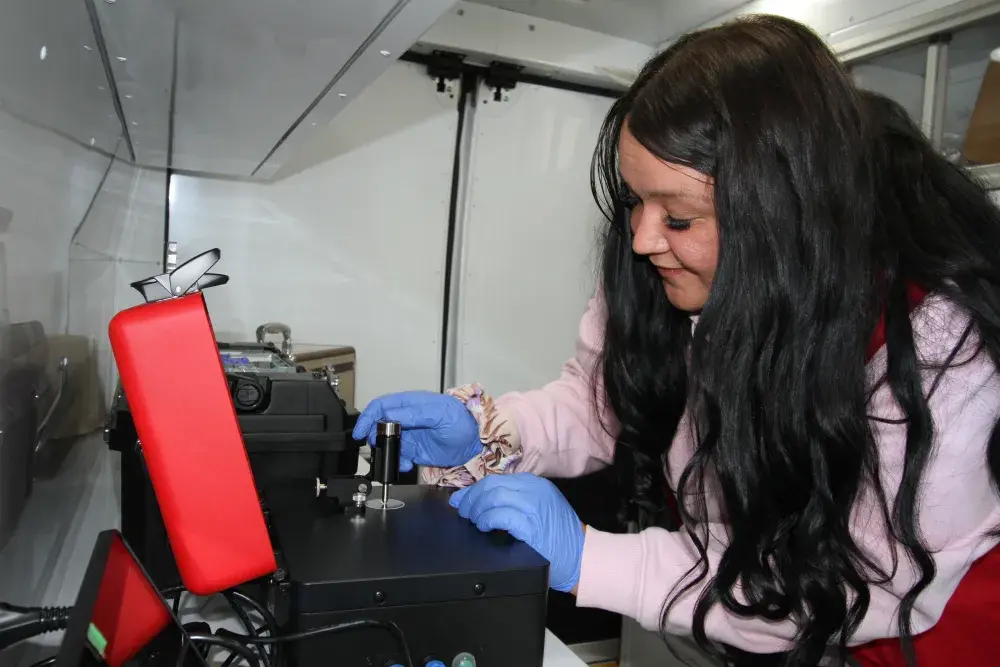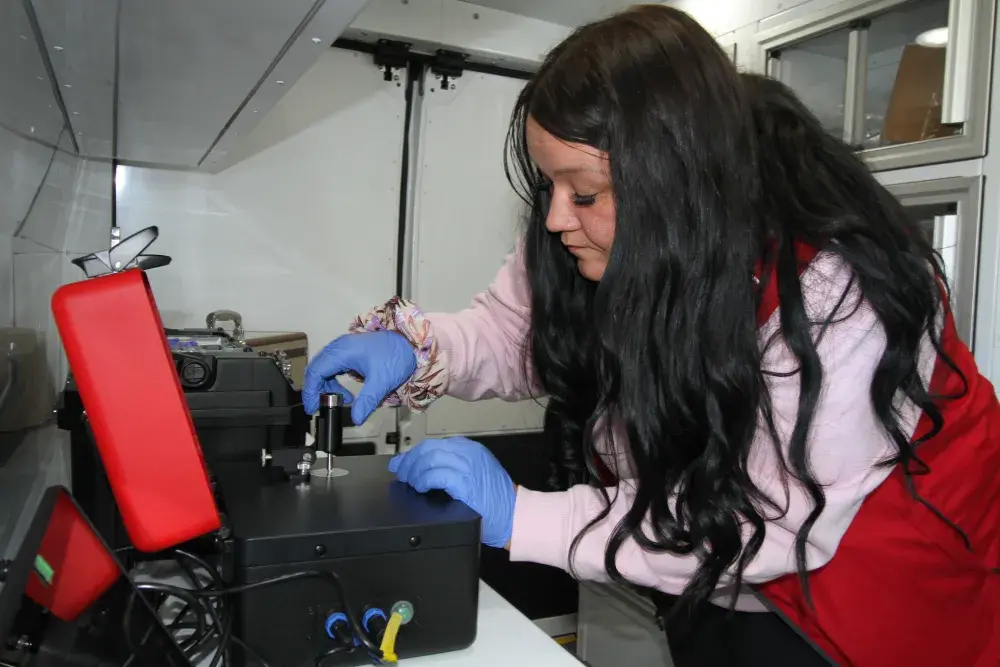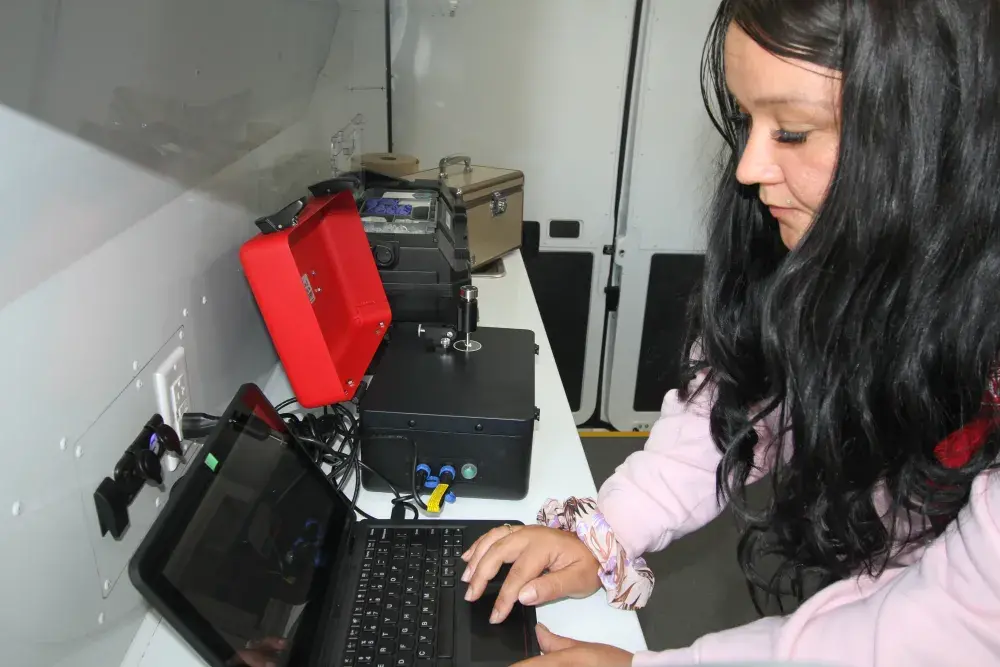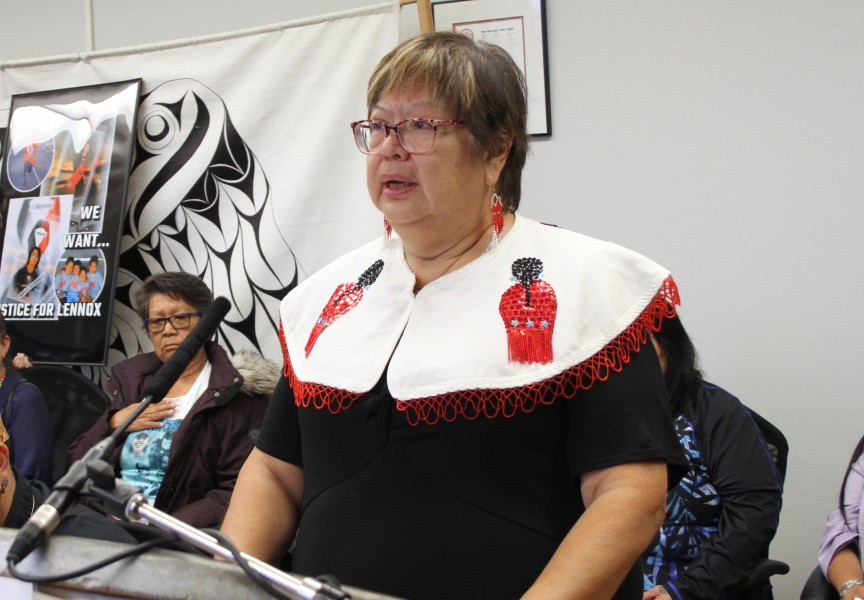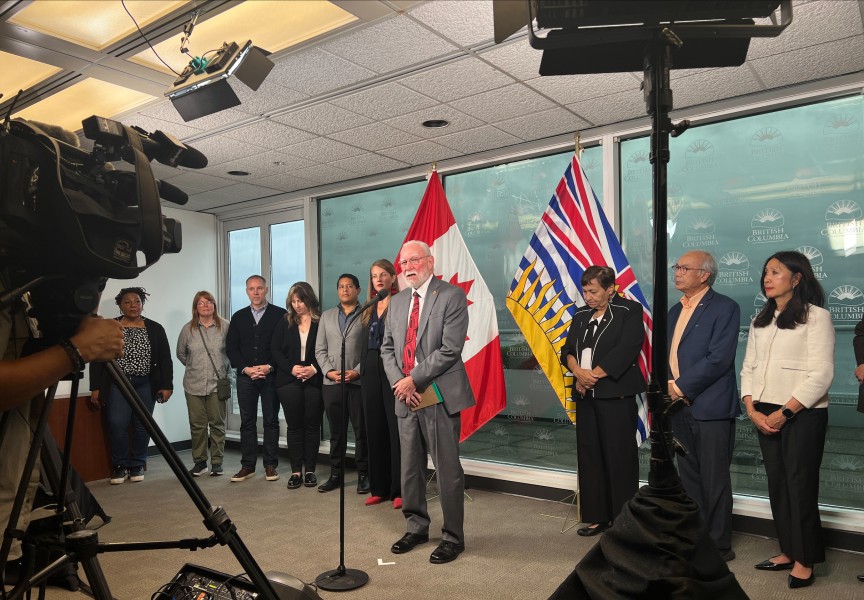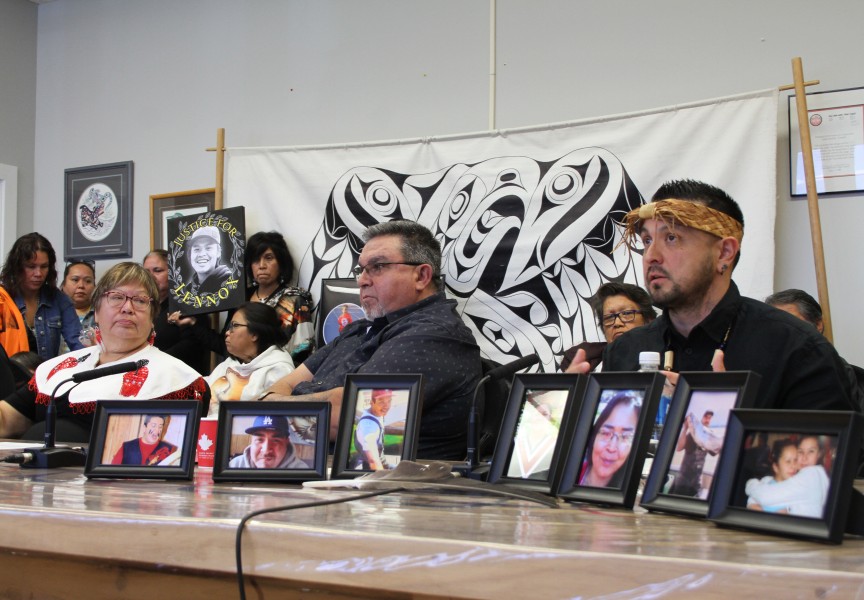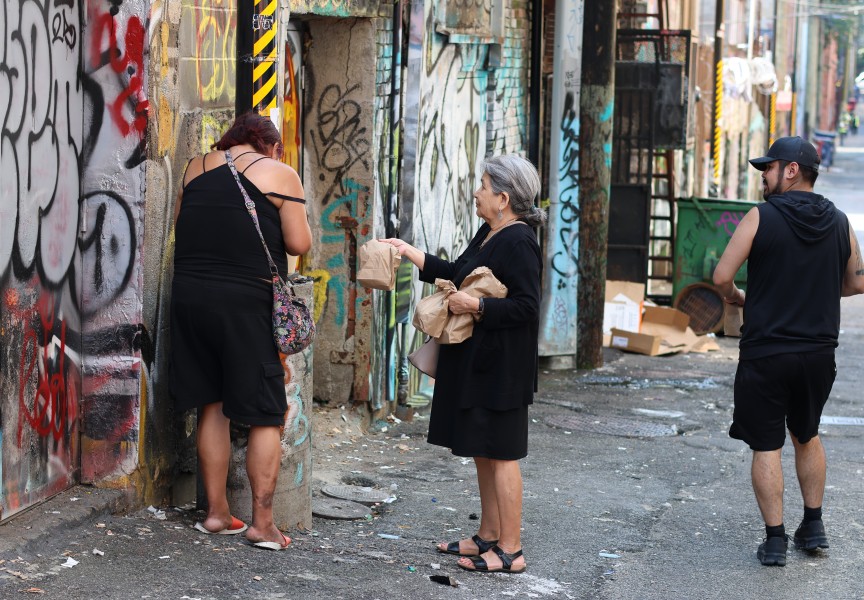A new tool is being introduced to Port Alberni’s streets as front-line workers fight to make life safer for illicit drug users.
The Nuu-chah-nulth Tribal Council’s health department has purchased a mobile drug testing machine, which can instantly detect the contents of a sampled batch of substances. The device came into use on Sept. 15, and it will accompany harm reduction workers as they provide street-level services from a van operated by the NTC’s Teechuktl Mental Health department.
The drug testing machine is expected to help with the continued unpredictability of the illicit street supply – a danger for drug users that has been a major factor in the crisis that has devastated communities for nearly a decade.
“We’re going to test right on the spot with the client and give them the immediate results,” said Brianna Rai, the NTC’s harm reduction coordinator. “A lot of people want to know right now.”
British Columbia’s public health emergency has been in place since April 2016, recognizing the rise in fatal overdoses that coincided with the increase of fentanyl in the illicit market. The synthetic opioid continues to be present in over 70 per cent of fatal overdoses, although the unexpected presence of other drugs, like the depressant benzodiazepine, has brought a desire from many drug users to find out exactly what is in what they’re consuming.
“Sometimes people don’t want to do benzos, and they want to know if there’s benzos in it,” said Rai. “Sometimes they just want to know if it’s true drugs or if someone has ripped them off.”
Another drug testing machine has been available at the Overdose Prevention Site, which is run by the Port Alberni Shelter Society. But not everyone is comfortable coming to this facility for fear of being labelled a drug user, said Rai.
“Some people want to keep things private,” she said. “There’s a lot of stigma and shame around it.”
After the initial test is conducted, data is sent to Substance Drug Checking in Victoria, which will provide a detail breakdown of the sample’s contents, with percentages. This information is expected to be available within a week, and will be provided to clients, explained Rai.
“We’re going to keep an information sheet, and we’re going to find them to tell them the results,” she said, adding that the mobile service is the first of its kind in B.C.
The drug testing machine is being introduced nearly a year after the NTC declared a state of emergency for the overdose and mental health crisis. When this declaration was made on Sept. 19, 2024, NTC President Judith Sayers noted how every Nuu-chah-nulth family has been impacted by the ongoing toll of tragedies.
“We are losing too many people, especially young people,” said Sayers at a press conference. “We don’t have enough capacity and dollars. Certainly, we provide services at the tribal council, but it’s not enough.”
The phenomenon has hit Indigenous communities across B.C., leading the First Nations Health Authority to report that Aboriginal people in the province are dying at a rate six times that of the rest of the population.
For years now drug overdose has been the leading cause of unnatural death in B.C. – more then car accidents, homicide and suicide combined – but progress is finally becoming evident. Over the first half of this year the B.C. Coroners Service reported 915 deaths from illicit use, showing a 25 per cent decline from the same period in 2024. Over May and June 2025 B.C. had an average of less than five deaths a day – a rate that hasn’t been seen since the early days of the COVID-19 pandemic.
The non-judgmental approach of harm reduction has drawn criticism from conservative politicians as well as business owners in high-usage areas. But Rai sees the decline of overdoses as proof that harm reduction works, as the street supply has not significantly changed over the last two years.
“Having support workers and trusted people and harm reduction supplies available to people is helping,” she said. “They trust us and they know they can come to us for a needle kit.”
With this trust comes the opportunity to refer someone to treatment, when they are ready.
“It’s constantly us going out and meeting people where they’re at with zero judgement,” said Rai, who observes moments among her clients when “a light goes off” and they decide to seek help. “It takes a long time for people to come to that spot, but we’re seeing a lot more.”
But a major roadblock to recovery continues to be the absence of detox beds in Port Alberni, a pressing issue that came up a year ago when the NTC declared the state of emergency. At the time NTC Vice-President Les Doiron noted that the lack of detox facilities in Port Alberni makes getting into one the equivalent of “winning the lotto.”
“People want to detox and there’s no beds,” added Rai. “They want help right now, but there’s nowhere to go.”
Some support is available from the First Nations Health Authority, which reviews applications within a week.
“FNHA offers a one-time preliminary amount to support access to emergency treatment beds at a selection of non-FNHA funded facilities around the province,” stated the health authority in an email to Ha-Shilth-Sa. “This program supports clients to access rapid access to bed-based treatment and withdrawal management.”
Information on emergency support from the First Nations Health Authority is available at 1-855-693-3033 or nonFNHAFundedtc@fnha.ca.
The drug testing machine is accessible seven days a week in the NTC’s harm reduction van. The vehicle’s current schedule of operation is from 8:15 a.m. to 6 p.m., except on Tuesdays and Fridays, when it runs 10-8. The vehicle also occasionally travels to Nanaimo and Campbell River to promote safety among drug users.

